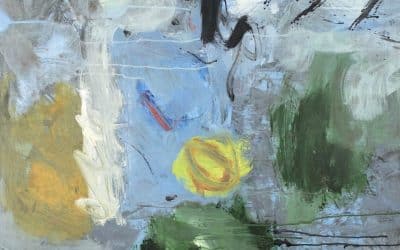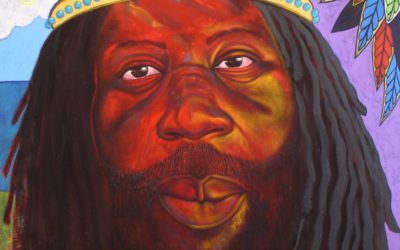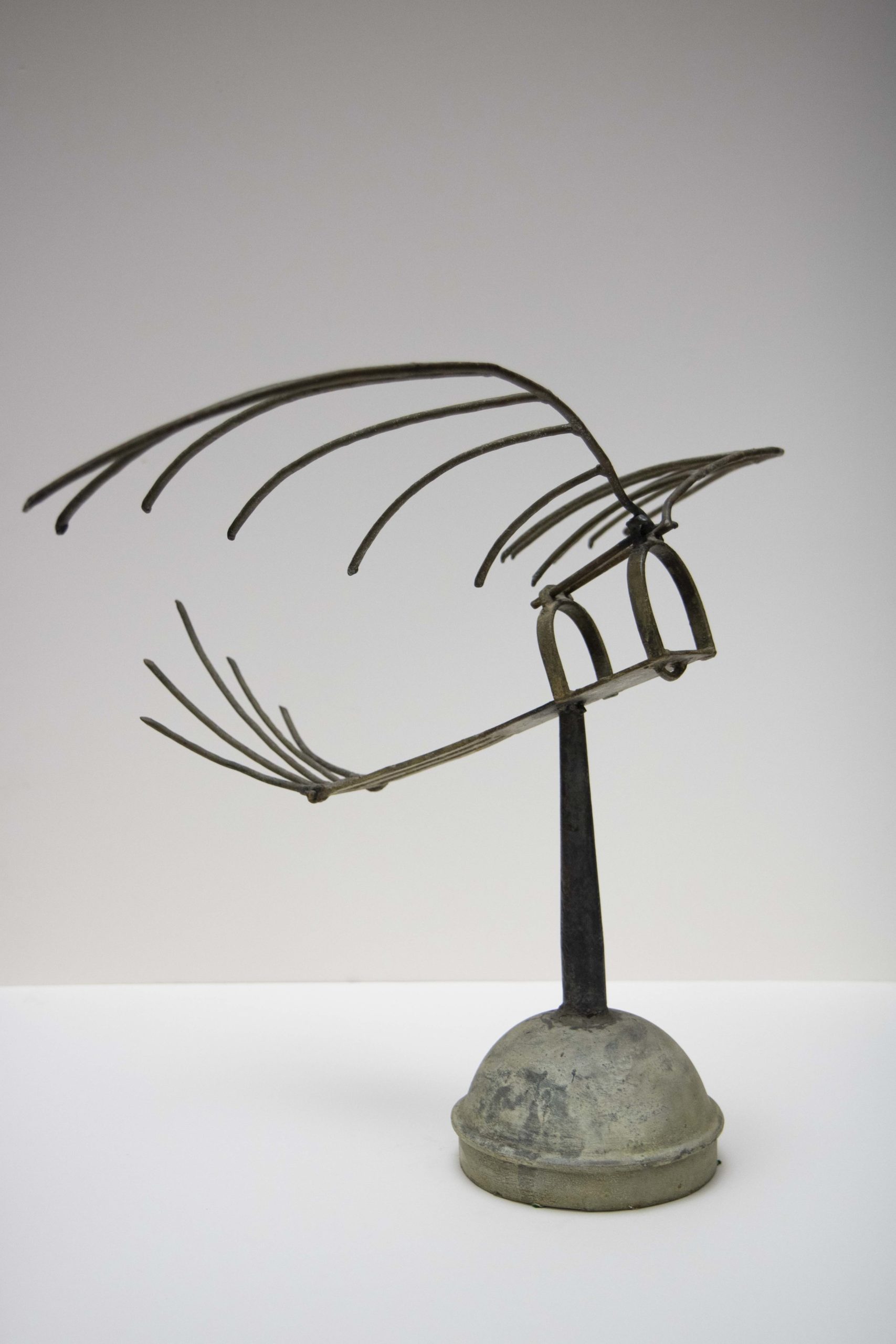
By Natalie Willis
Metal is a tricky medium. It’s industrial, ceremonial, it can be strong enough to build bridges or soft enough that your very teeth could dent it. For Tyrone Ferguson, he doesn’t seem to find these traits something to work against, rather he works with his medium intuitively, sensitively, and brings some spirit back into metalwork and blacksmithing.
According to the Dawn Davies Collection catalogue, “Love and Responsibility” (2012), Ferguson apprenticed under the last known blacksmith in Nassau. He maintains his personal workshop to make functional objects such as chairs, stair railings, and gates like those at the NAGB – but with a focus on aesthetic and making something meaningful as much as something useful. As Erica James writes in his biography for the catalogue, “Always beckoning the viewer to touch and feel the energy of his sculpture, Ferguson’s art references time-held traditions of metal work in Africa and continues to make the vital connection between artist, object, and audience.” In 2005, Ferguson worked alongside Antonius Roberts – the pair have undertaken a number of collaborative projects together – to produce the “Sacred Spaces” public art project at Clifton Heritage.
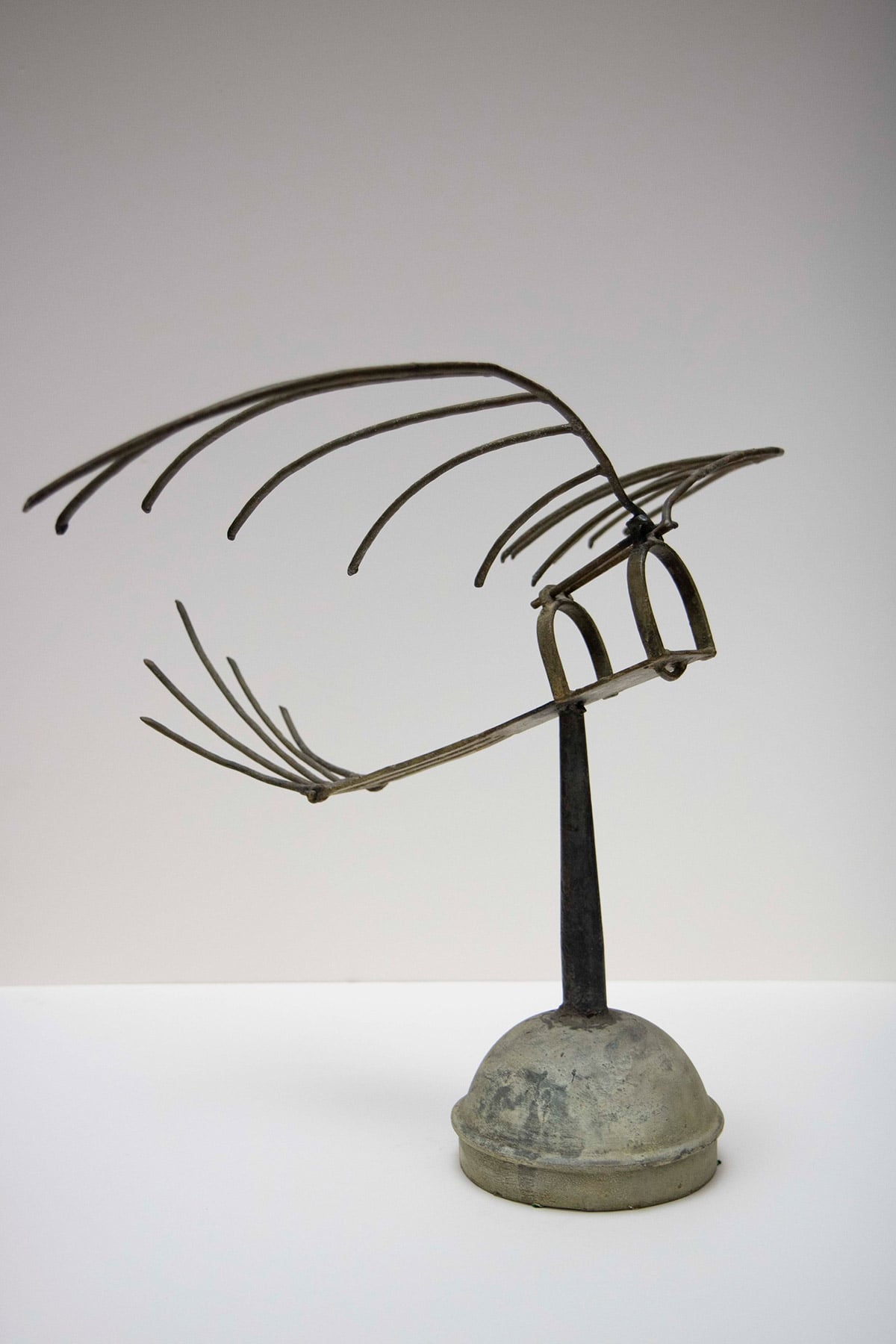
“Untitled (Rake Bird)” (nd), Tyrone Ferguson, metal, 22 x 30 inches. Part of the National Collection.
His “Untitled (Rake Bird)” (nd) is something a little smaller scale, but just as intriguing. Shown as part of the NAGB’s Inter-Island Traveling Exhibition initiative, for the 2018 exhibition “TRANS: A Migration of Identity”, Ferguson’s work is a natural fit under the theme. His references to African spiritual practice, and his own interests in wider views of spirituality, help us to think of the ways we retain our African heritage in The Bahamas. We are part of the African diaspora, and simultaneously exist within the Caribbean as a distinct region with its own diaspora in its own right. We straddle thousands of years of history on either side of the Atlantic, which is no small thing, and work like Ferguson’s helps us to settle ourselves in this history and its richness.
This small bird-like sculpture, made of what appears to be old fashioned rakes, looks at once make-shift, upcycled, almost reminiscent of some structure for Icarus’ failed flight plan. It also reminds one of the West African story of the impundulu or the “lightning bird”. Perhaps it is the metal, bringing to mind ideas of conductivity and lightning rods, mixed with the wing-like form. The “lightning bird” is said to conjure thunder and lightning with its wings, and is meant to be thought of as the servant of a witch or witch doctor. However, it must be noted that our westernised notions of witchcraft are often demonised and very lacking in the depth of its history outside of Europe, something I imagine is not lost on Ferguson as someone who studies the histories of multiple faith systems himself. The lightning bird is also said to take on the form of a beautiful young man who seduces women – sound familiar? It may be the Gaulin and the Lightning Bird originate from the same weaving of West African folklore.
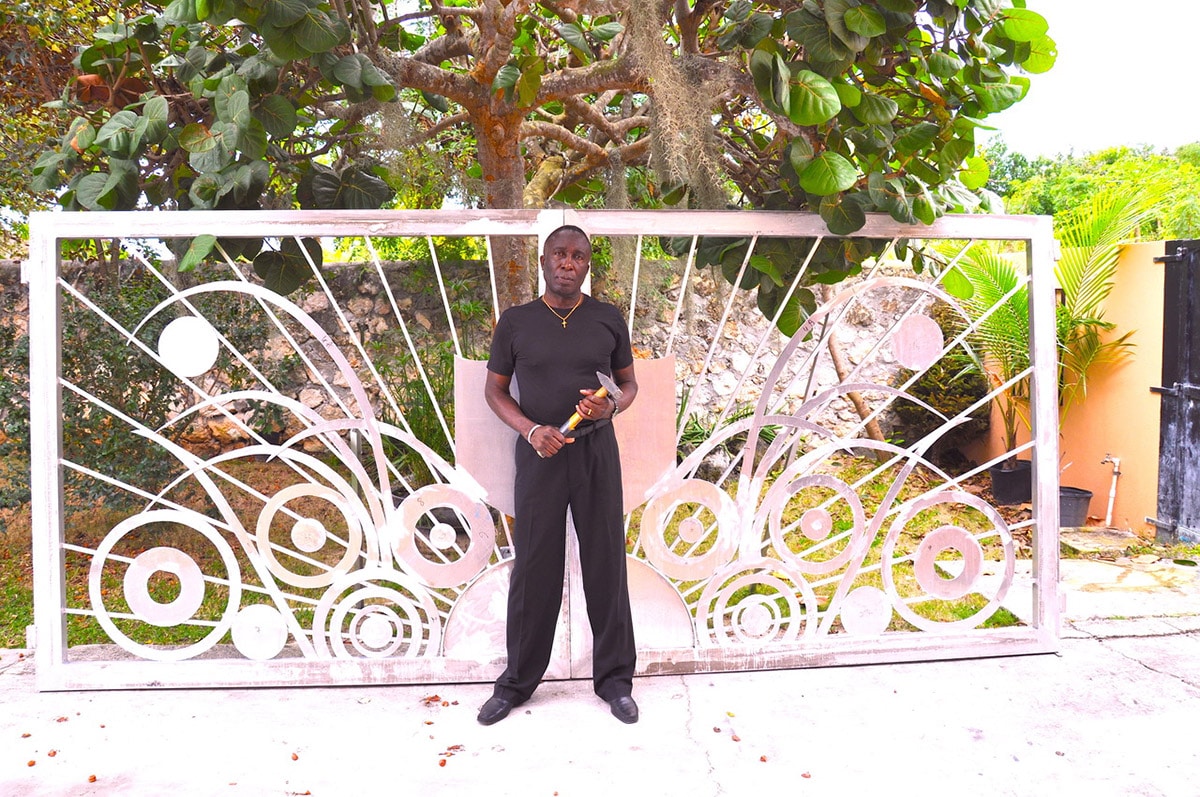
Image of artist Tyrone Ferguson.
According to Ferguson, “People don’t really know what a blacksmith is, not in the contemporary sense… but tapping into the spirit of the blacksmith in Africa, the blacksmith was the one who made the tools to do the ceremonial rituals. The Blacksmith was an integral person in the community. The blacksmith was an intermediary.” Ferguson’s mixing of form and function, of Bahamian and African, of art and spirit, therefore, is nothing short of alchemy.
See this work and others in the upcoming Permanent Exhibition rehang, “Timelines: 1973-2007” curated by Richardo Barrett. The exhibition opens on Thursday, August 1st, 2019.
